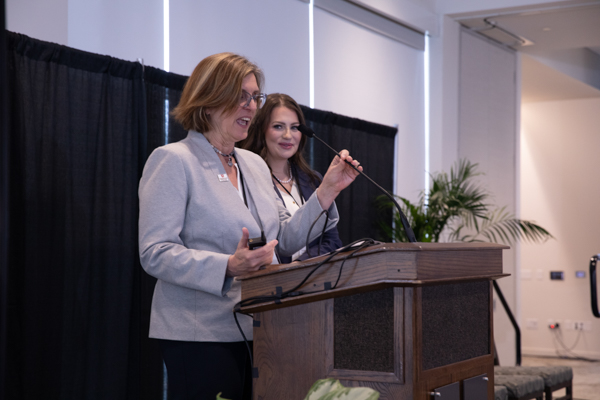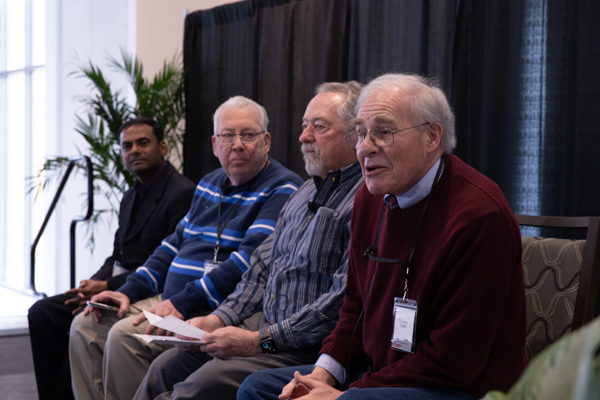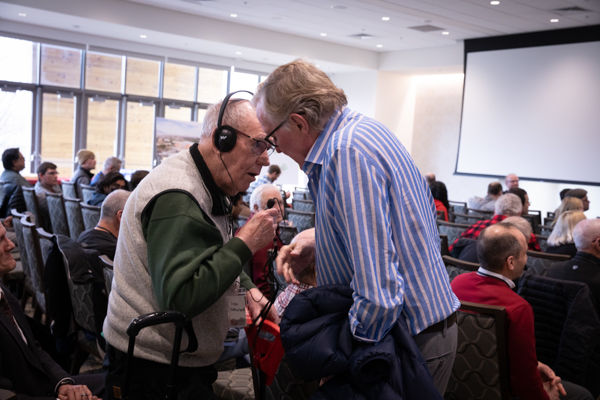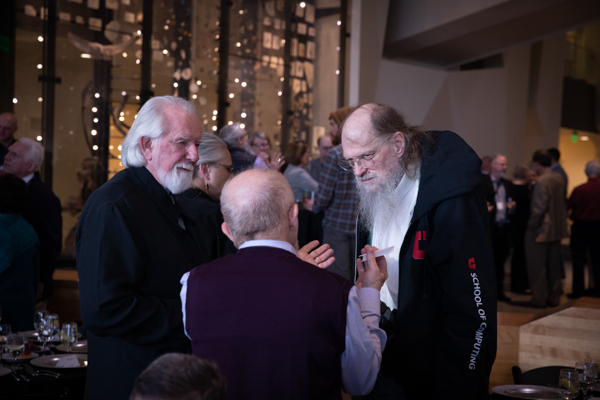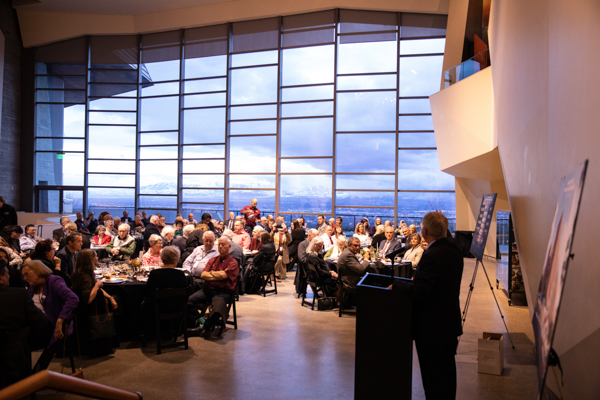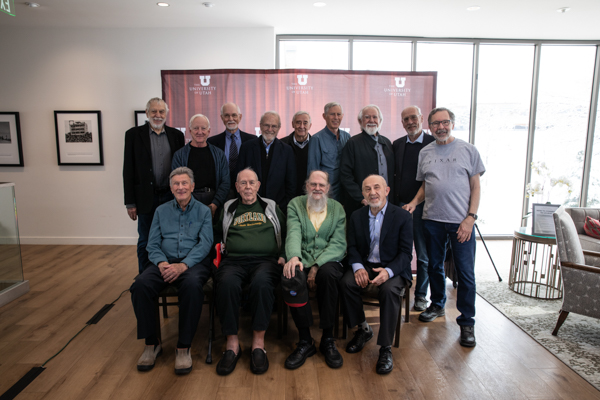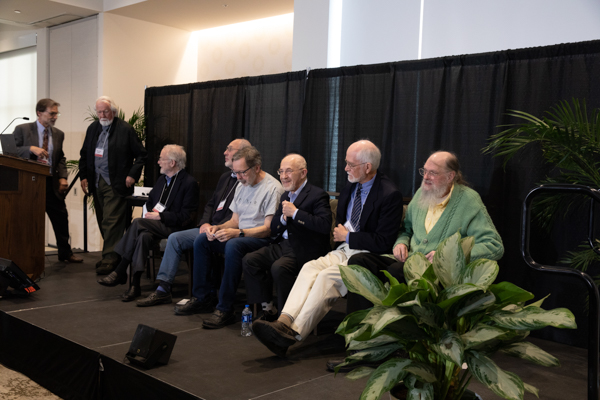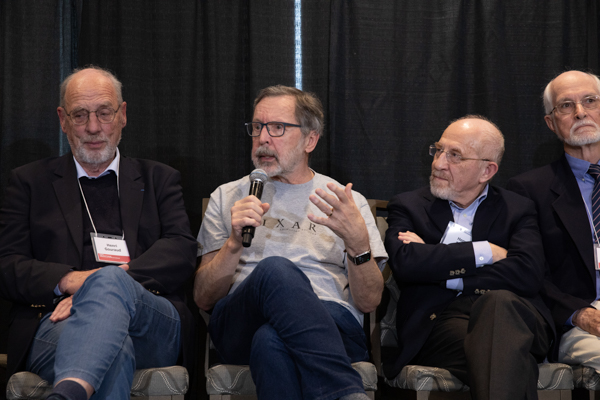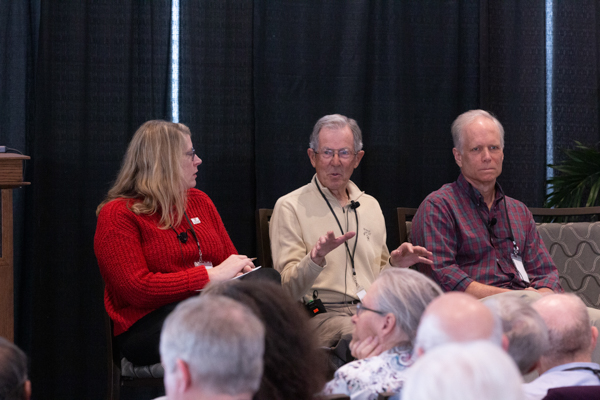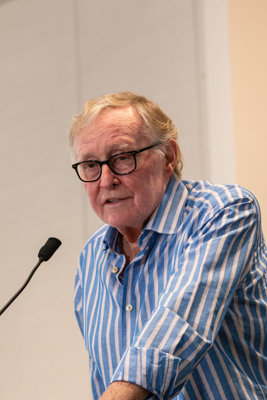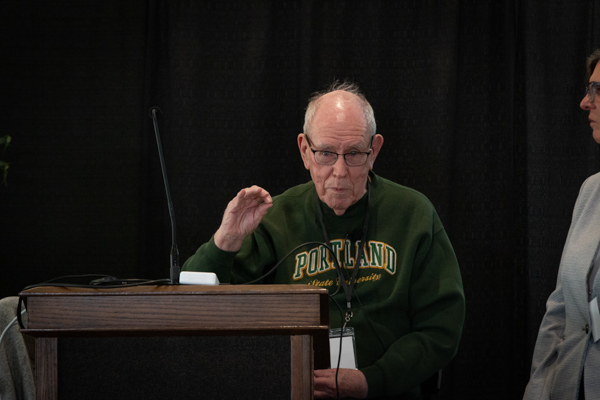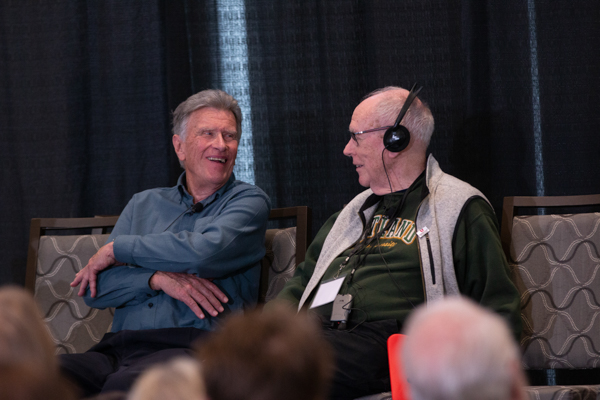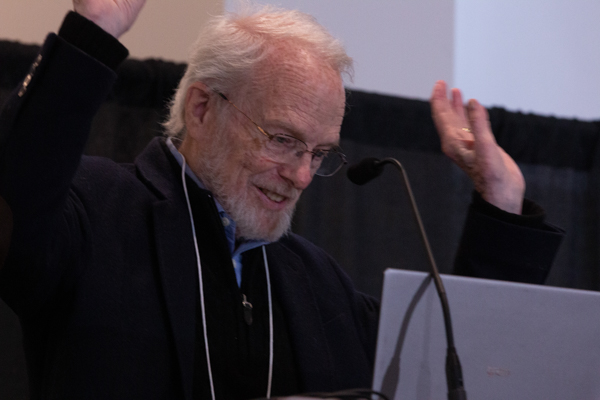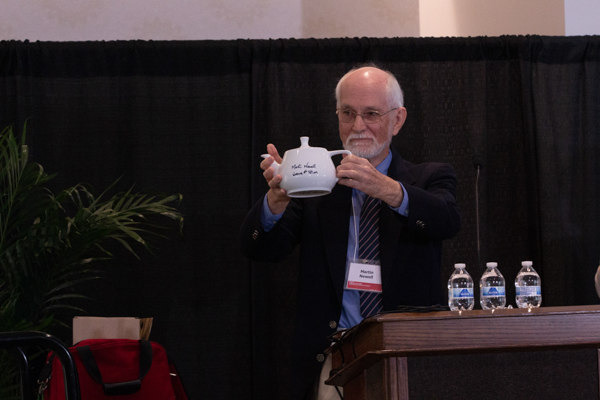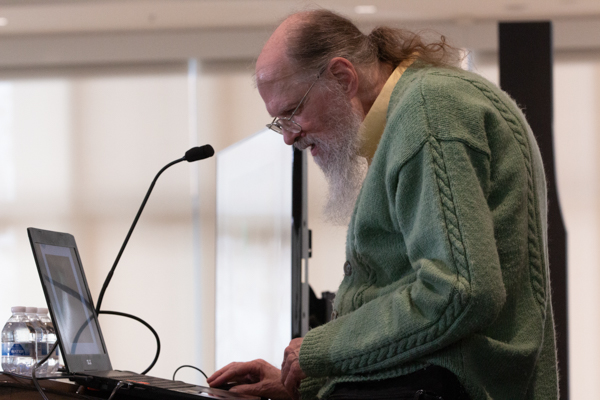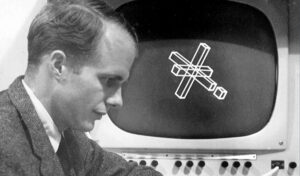 It was like The Beatles reuniting . . . but for the world of computing.
It was like The Beatles reuniting . . . but for the world of computing.
Ed Catmull. John Warnock (pictured). Jim Clark. Alan Kay. Ivan Sutherland. Martin Newell. They are a just a handful of the luminaries in the late 1960s and 1970s who revolutionized computer graphics by inventing technologies that have aided and shaped countless industries today.
For the first time ever, these and other legends of that time reunited on the U campus March 23 and March 24 to commemorate their roles as 3D graphics pioneers and to celebrate the 50th anniversary of the U’s Kahlert School of Computing.
This once-in-a-lifetime two-day event, which was open to the public, was held in the ballroom of the University of Utah’s Cleone Peterson Eccles Alumni House in Salt Lake City, Utah. You can view YouTube livestreams of both days by clicking here.
Led by then computer science professor Ivan Sutherland and David Evans (pictured, right), the University of Utah’s first computer science research program in graphics and interactive computing, these trailblazing graduate students researched and developed ground-breaking innovations in 3D objects and computer animation decades before “Toy Story.” Many have later called this nascent period at the U the “Camelot Era.”
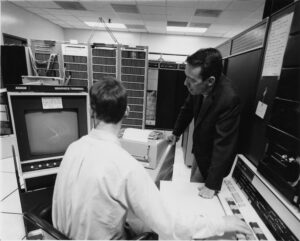 During the event audience members heard amazing stories of how these then U researchers developed technologies that would later become a part of our everyday world in both work and entertainment.
During the event audience members heard amazing stories of how these then U researchers developed technologies that would later become a part of our everyday world in both work and entertainment.
Also included were talks from some of the Kahlert School of Computing’s current faculty and former researchers about more recent work in fields including networking, cloud computing and newer graphics technologies.
Click here to see a list of videos of all of the keynotes and panel discussions during the two days.
List of Speakers
James Blinn, Ph.D., 1978 — Created specular lighting models, bump mapping and environment mapping for surface textures in graphical images.
Ed Catmull, Ph.D., 1974 — Pioneer in computer animation who co-developed RenderMan rendering software. Co-founder of Pixar Animation Studios and winner of five Academy Awards.
Jim Clark, Ph.D., 1974 — Rebuilt the head-mounted display and 3D wand to see and interact with 3D graphic spaces. Founder of Netscape and Silicon Graphics.
Henry Fuchs, Ph.D., 1975 — Innovator in high-performance graphics hardware, 3D medical imaging and head-mounted display and virtual environments.
Henri Gouraud, Ph.D., 1971 — Created the Gouraud shading method for polygon smoothing — a simple rendering method that dramatically improved the appearance of 3D objects.
Alan Kay, Ph.D., 1969 — Envisioned the windowing graphical user interface at Xerox PARC, which led to the design of Apple MacIntosh and Windows computers.
Martin Newell, Ph.D., 1975 — Developed procedural modeling for 3D object rendering.
Co-developed the Painter’s algorithm for surface rendering.
Rodney Rougelot — Former president and chief executive officer of Salt Lake City-based Evans & Sutherland, which then developed military and aviation simulators with 3D graphics.
Robert A. Schumaker — An engineer with Evans & Sutherland who conceived a new architecture for rendering complex, high-quality 3D images for its flight simulators.
Alvy Ray Smith — Co-founder of Pixar Animation Studios. First Director of Computer Graphics for George Lucas’ Lucasfilm.
Ivan Sutherland, U Computer Science Professor, 1968-1974 — Inventor of Sketchpad, the first interactive graphics program with geometric constraints. Co-founded Evans & Sutherland with David Evans.
John Warnock, Ph.D., 1969 — Developed the Warnock recursive subdivision algorithm for hidden surface elimination. Co-founder of Adobe, which developed the Postscript language for desktop publishing and is now one of the largest software brands in the world.
Click below to see a photo gallery of the two-day event. Click here to see all videos of the two-day event.
